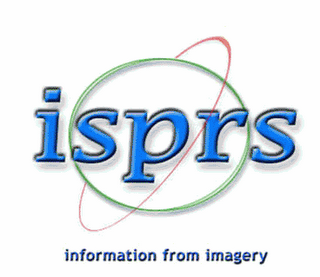International Journal on Spatial Data Infrastructures Research
Extract of the Call for Papers:
Articles are considered for publication in the following areas:
The Journal encourages articles from broad multi-disciplinary backgrounds including social and environmental sciences, and engineering, deploying also critical and interpretative methodologies. Articles in the following areas are particularly welcome:
Spatial and Network Technologies with particular emphasis on the development of geoinformation services, interoperability, technical specifications and standards, distributed geoprocessing and grid computing, sensor webs, intelligent (geo)agents, and related areas. Reflections on the next generation of SDIs, their components, and research challenges that need addressing to develop them are encouraged.
Distributed Spatial databases and metadata with particular emphasis on data harmonization, conceptual modeling and schema mapping, semantics, ontologies, data quality and uncertainty, and innovative ways of documenting, indexing, searching and retrieving information resources in multi-lingual/cultural and multi-disciplinary settings.
Methods for data mining and knowledge retrieval, feature extraction, data fusion, integration, generalization, and visualization in distributed environments, and to spatial analysis, modeling, and simulation in environmental and social policy domains.
Information Policies with particular attention paid to the impacts of different policies and business models for data acquisition, documentation and maintenance, access, and exploitation. Articles reflecting on the differential impacts of such policies on data producers, value added resellers and business, education and research, and end-users at different levels, from trans-national to local, are encouraged, as well as articles on the organizational and institutional challenges to SDI implementation.
Applications and Impacts of SDIs at local, regional, national, and trans-national levels in different environmental and social policy thematic domains. Articles on applications are encouraged to be more than a mere description, but to provide a critical reflection on the underlying drivers, of what seemed to work and what did not. Analyses of failures are also welcomed as there is much to learn from these experiences. The Journal intends to pay particular attention to the social and economic impacts of SDIs, and related Information Infrastructures (e.g. e-government) at organizational, inter-organizational, and territorial levels. Studies on cost-benefits and return on investment are especially welcomed as well as evidence of positive or negative impacts on and for communities (virtual or physical) in respect to their development, mobilization, participation and empowerment.
Editor
M. Craglia
European CommissionDG Joint Research CentreInstitute for Environment and SustainabilitySpatial Data Infrastructures UnitT.P. 262Via Fermi 120120 Ispra (VA)ItalyE-mail: Massimo.Craglia@jrc.it
JRC Editorial Board
Massimo Craglia
Lars Bernard
Paul Smits
Pierre Soille
Editorial Advisory Board
M. Blakemore, University of Durham
M.M. Brown, University of North Carolina at Chapel Hill
Z. Nedovic-Budic, University of Illinois at Urbana-Champaign
N. Chrisman, University of Laval
D. Coleman, University of New Brunswick
J.P. Donnay, Université de Liège
Y. Georgiadou, ITC, Enschede
M. Goodchild, University of California at Santa Barbara
M. Gould, Universitat Jaume I, Castelló
J. Jiang, National Geomatics Center of China
W. Kuhn, University of Münster
I. Masser, University College London
H. Onsrud, University of Maine
G. Remetey-Fullop, Hungarian Association for Geo-Information
I. Williamson, University of Melbourne
Bővebbet: http://ijsdir.jrc.it/
More on AGILE: www.agile-online.org
More on EuroSDR: www.eurosdr.org
More on NKTH: www.nkth.gov.hu
A térinformatika tudományos kérdéseivel foglalkozó nyílt fórum, amely az euróatlanti és délkelet-ázsiai irányzatok, kutatási eredmények híreit tartalmazza
2006-06-14
2006-06-12
ISPRS alap tudományos kezdeményezések felkarolására

ISPRS logo Kép: HUNAGI fotógyüjtemény
ISPRS alap tudományos kezdemé-nyezések támogatá-sára
A munkacsoport-vezetők javaslata alapján a műszaki bizottságvezetők ajánlatára fognak dönteni az odaitélésről a goai konferencián.
Magyarországnak egy munkacsoport társvezetője van, éppen a Téradat-infrastruktúra témakörben.
Az ISPRS magyarországi tagszervezete az MFTTT (www.mfttt.hu).
Az ISPRS Magyar Nemzeti Bizottság elnöke Winkler Péter.
More on AGILE: www.agile-online.org
More on EuroSDR: www.eurosdr.org
More on ISPRS: www.isprs.org
2006-06-10
3D visualisation - the HoloVizio approach

Illustration: extracted from Holografika Ltd's homepage
Hungarian solution for 3D Display: the HoloVizio
Holografika Kft has been nominated in the IT category of the World Economic Forum's "Technology Pioneers 2006 and has business success at the recent Research and Innovation Exhibition in Paris.
The 3DCGI.com writes on the HoloVizio approach of the Hungarian Company Holografika:
"The feature list for the HoloVizio line of displays is impressive. Like most of the displays mentioned here HoloVizio boasts true 3D with the naked eye. But, it's the other features that stand out.
- Viewers can walk around the screen in a wide field of view seeing the objects and shadows moving continuously as in the normal perspective. It is even possible to look behind the objects, hidden details appear, while others disappear (motion parallax)
- Unlimited number of viewers can see simultaneously the same 3D scene on the screen, with the possibility of seeing different details
- Objects appear behind or even in front of the screen like on holograms
- No positioning or head tracking applied
The displays are currently available in 32" (16:9) and 26" (4:3) sizes. "
More on the different 3D visualisation solutions:
http://www.3dcgi.com/cooltech/displays/displays.htm
More on Holografika:
www.holografika.com
More on HUNAGI:
www.hunagi.hu
More on NKTH:
www.nkth.gov.hu
Feliratkozás:
Bejegyzések (Atom)